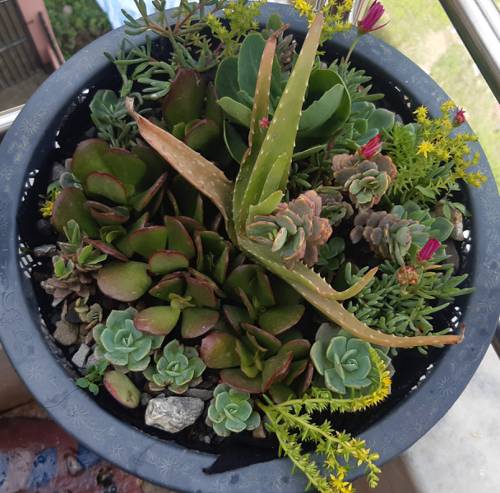
FAQ About Indoor Plant Root Zone Temperature Management

What is root zone temperature in indoor plants?
Root zone temperature refers to the temperature of the soil or growing medium around the roots of a plant. For indoor plants, maintaining an optimal root zone temperature is crucial for healthy growth, efficient nutrient uptake, and preventing stress or shock.

Why is root zone temperature important for indoor plants?
Root zone temperature is vital because it directly affects a plant's ability to absorb nutrients and water. If the temperature is too low, nutrient uptake is slower, which can stunt growth. If too high, it can lead to root damage. Maintaining an ideal root zone temperature helps maximize plant health and productivity.

What is the optimal root zone temperature for most indoor plants?
Most indoor plants thrive with a root zone temperature between 65°F and 75°F (18°C and 24°C). However, this can vary depending on the specific plant species. It's important to research the preferred conditions for each plant type to ensure optimal growth conditions.

How can you measure root zone temperature?
Root zone temperature can be measured using a soil thermometer. These devices are inserted into the soil to provide accurate readings of the temperature around the roots. Digital soil thermometers offer quick and easy-to-read results, making them popular among indoor gardeners.

What are common methods to manage root zone temperature for indoor plants?
Common methods include using heat mats to raise the root zone temperature or installing fans to increase air circulation and thus reduce heat. Adjusting the environment, such as moving plants away from drafty windows or direct heat sources, can also help maintain the desired temperature.

What problems arise from incorrect root zone temperatures?
Incorrect root zone temperatures can lead to various problems such as stunted growth, nutrient deficiencies, increased susceptibility to diseases, and root damage. These issues arise because temperature extremes either slow down or excessively speed up biological processes critical for plant health.

Can root zone temperature affect nutrient uptake?
Yes, root zone temperature significantly impacts nutrient uptake. If the temperature is too low, plants may struggle to absorb necessary nutrients, leading to deficiencies. On the other hand, high temperatures can cause nutrients to become too concentrated, potentially burning the roots.

How does root zone temperature fluctuate in indoor environments?
In indoor environments, root zone temperature can fluctuate due to central heating, air conditioning, or proximity to windows and doors. These factors can cause temperature variations that might stress the plants. Monitoring and managing these conditions are key to maintaining stable root zone temperatures.

What tools can help in managing root zone temperatures?
Tools such as digital soil thermometers, heat mats, and environmental control systems (like thermostats or programmable timers) can be invaluable. These instruments measure and regulate temperature effectively, ensuring indoor plants remain in their optimal growth condition.

Do different indoor plants have varying root zone temperature preferences?
Yes, different indoor plants may have varying preferences for root zone temperature. For instance, tropical plants typically prefer warmer temperatures, while temperate or succulent plants might thrive better in slightly cooler conditions. Understanding each plant's specific needs is crucial for optimal care.

How do seasonal changes affect indoor root zone temperatures?
Seasonal changes can impact indoor temperatures due to varying levels of sunlight and ambient temperature changes. Winter months might require additional heating sources to maintain optimal root zone temperatures, while summer might necessitate cooling strategies to prevent overheating.

What are the signs that an indoor plant is experiencing temperature stress at the root zone?
Signs of temperature stress include wilting, yellowing leaves, stunted growth, or leaf drop. Plants may also exhibit nutrient deficiency symptoms even when nutrients are present, as stressed roots struggle to absorb them efficiently.

Can insulation help manage root zone temperature?
Yes, insulating pots or using thicker containers can help moderate root zone temperatures. Additionally, materials like mulch can provide a layer of insulation, helping keep the root area at a stable temperature.

How does the potting medium affect root zone temperature?
The potting medium can affect temperature retention and distribution. Media with higher moisture content or dense structure may retain heat longer, while dry, aerated mediums might cool down faster. Choosing the right medium can assist in maintaining consistent root temperatures.

Can artificial lighting affect root zone temperature?
Yes, artificial lighting can affect root zone temperature, especially if lights generate significant heat. This can raise the growing medium's temperature. Positioning plants appropriately and using fans can help mitigate overheating from lights.

How does airflow impact root zone temperature for indoor plants?
Good airflow can disperse excess heat away from the root zone, preventing overheating. It also promotes even temperature distribution. Therefore, managing airflow via fans or open windows can help maintain optimal root zone conditions.

What role do heat mats play in root zone temperature management?
Heat mats are used to gently increase the temperature of the root zone, particularly beneficial during colder months or in cooler indoor settings. These mats provide consistent warmth and are essential for promoting seed germination and overall plant growth.

Is it necessary to adjust root zone temperature settings during plant growth stages?
Adjusting root zone temperatures during different growth stages can be beneficial. Young plants or seedlings might require slightly warmer temperatures to stimulate root development, while mature plants need stable conditions to support metabolism and nutrient uptake.

How can I monitor multiple plants' root zone temperatures effectively?
Using digital thermometers or temperature sensors connected to a centralized monitoring system can provide real-time data across multiple plants. This setup allows for efficient management and quick response to any temperature discrepancies.

Are there automated systems available for root zone temperature management?
Yes, there are automated systems that integrate sensors and control devices to regulate root zone temperatures automatically. These systems can be programmed to maintain optimal conditions by adjusting heaters, cooling devices, or lighting to match set parameters.
